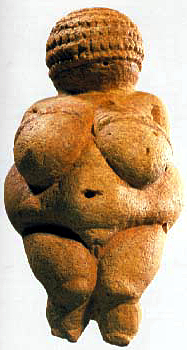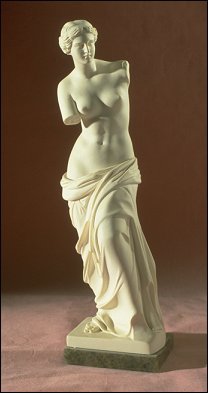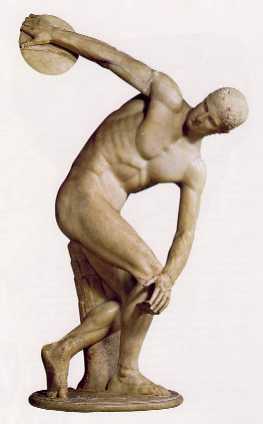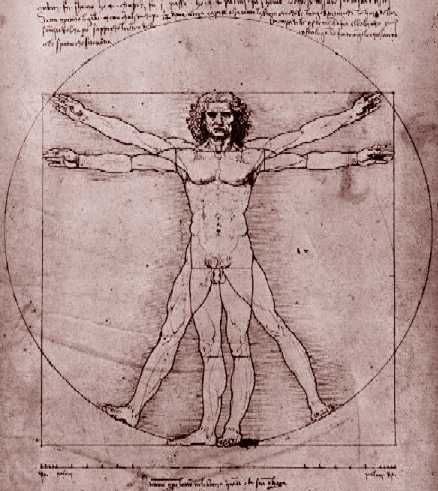|
The Ideal Human Figure?This page provides a look at the ideal human figure tracing the visual development of the body image in art from Ancient art to the Renaissance.
The Venus of Willendorf, ancient stone sculpture, c. 30,000 B.C.E.,
Women in Prehistory - The Venus of Willendorf by Christopher Witcombe
Venus de Milo, Classical Greek sculpture, c. 150 B.C.E.
Myron's Discus Thrower, marble, Leonardo da Vinci, Study of Human Proportions according to Vitruvius.
Here we see Leonardo's interest in applying mathematics to proportional scaling in human anatomy. He positioned the male figure inside a square and a circle. His man's height is equal to the length of the outstretched arms. The groin is at the center of the square. The navel is at the center of the circle.
Recommended External LinksThe Figure-drawing Lab Please return again for more art history pages -- there are so many *Online Art Instructors* - Please feel free to link Return to Online Art Center Homepage
|



